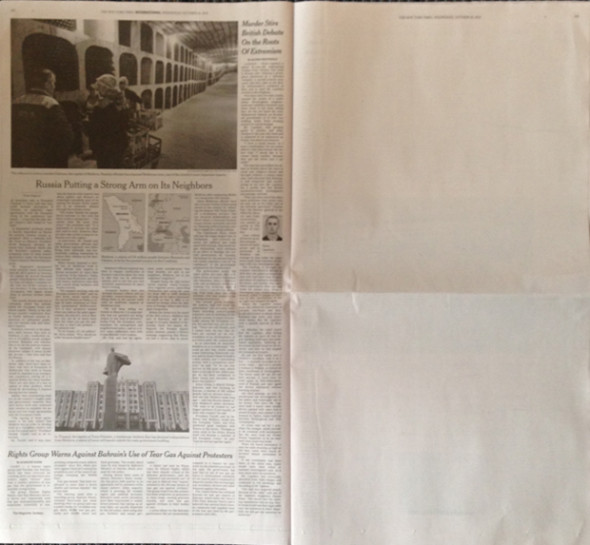On October 23rd, 2013, the readers of the New York Times were intrigued and initially a little perplexed at the sight of two blank pages published by the newspaper. The New York Times, in its 162 years has never been reported to have published blank papers before and this created a ruse in the newspapers’ audience. The news of the blank pages, which only consisted of the page numbers, the standard New York Times header and on the bottom of the second page, a URL for ‘wordsarelife.com’ was heavily tweeted about, as well as publicized further on platforms such as the Huffington Post, The Business Insider and Facebook amongst others.
As it turns out, the blank pages were not a printing error or cutting back on ink costs, but a spin on disruptive advertising for the promotion of the upcoming 20th Century Fox movie ‘The book Thief’ based on the novel by Markus Zusak. According to the marketing team behind the movie, and Senior Vice President of 20th Century Fox, the strategy behind the gimmick was for the empty space in the world’s leading newspaper to generate mystery and word of mouth that the promotional team required, which from the substantial discussions generated from several different forums, seems to have hit the spot.
The idea behind the activity was to put the audience in the shoes of the protagonist of the movie/book, who is a young girl who steals books while living in Nazi Germany because she loves to read. The URL was for the official site of the movie, and the thought was to generate an underlying feel of a world without words, and to imagine a day when the audience would open the newspaper and there would be no words in it.
The ad campaign, although having achieved a massive impact and causing quite a buzz amongst its readers making it an influential piece of advertising, got mixed reviews from the audience. Where some readers thought the promotion was ‘simple but clever and impactful’, others thought that it could easily be mistaken for two misprinted pages with a URL and nothing more. The advert was also said to have made good use of old media, as opposed to using the regular mainstream methods of social media platforms.
Aside from the impact value of the promotion, there has been much debate about the amount of money spent on advertising two blank pages in the New York Times. The cost of printing a one page advert in the NYT is approximated about $100, 00 and paying twice that much amount for an ad that may or may not convey the message seems to some; a perilous strategy. However as marketers search for a method to evaluate the cost-result feasibility of the publicity endeavor, one thing can be affirmed with utter conviction that not only is the mystery blank pages ad bold but also quite captivating to the masses.



